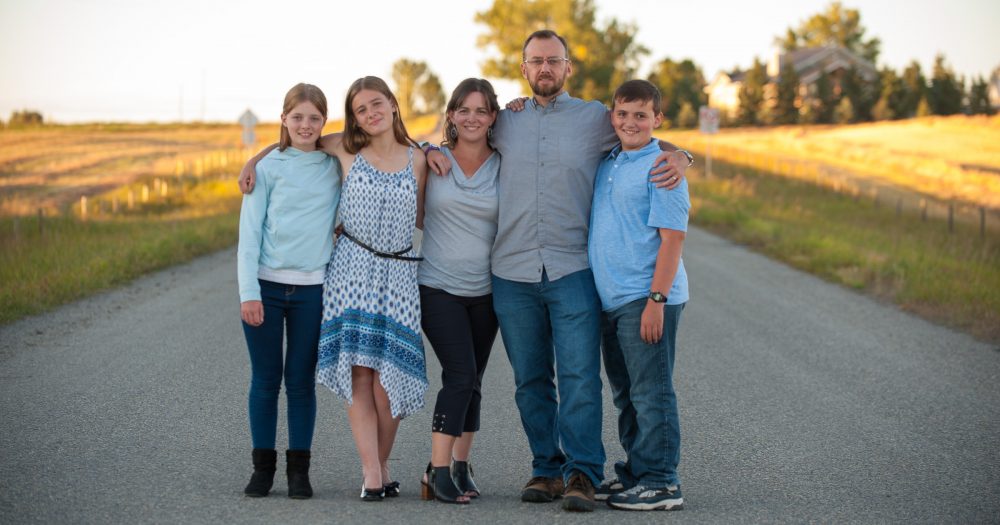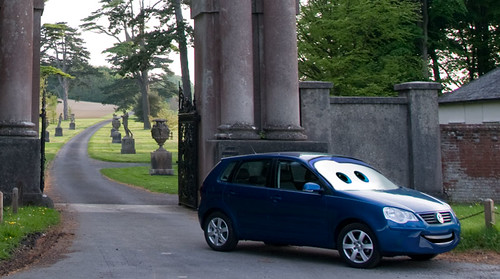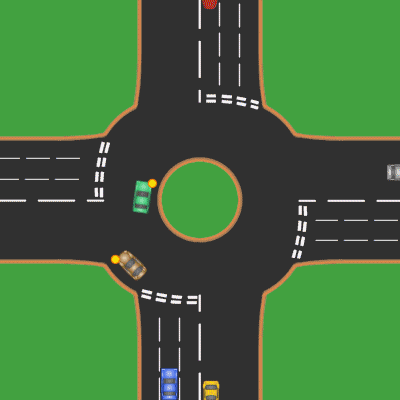Driving on the wrong.. er.. left side of the road can be fun.
While in the UK I rented an exotic European car to cruise the English countryside.
Ok.. so a 1.6 liter hatchback VW Polo may not be a candidate for an “exotic” car in most people’s books, but after four years of driving a minivan, just about any small car with manual transmission is exotic. Anyway, I had a blast with this little car as we whizzed down the the left side of the road, got dizzy on roundabouts, and took the scenic route many times (a euphemism for getting lost). Too bad I couldn’t have put handles on the top and checked it as baggage for the trip home.
It didn’t take long to get the hang of the British roadways and systems. Their roads are in excellent condition compared to Canadian roads, an easy thing for a frost-heave free country to do. They also have LOTS of signage on their roads and road surfaces. Unfortunately, I started my driving experience pretty much in the centre of London. I picked up the car just across the river from the British Parliament and spent the next 1.5 hours trying to learn to drive on the left, navigate roundabouts (which make for easy u-turns should you get lost), and dealing with traffic in a major city. Obviously, I survived.
There were, however, three things that I continually found difficult to adjust to in driving the UK:
1) Getting in the correct side of the car.
2) Knowing where the left side of my car ended. After driving for 20 years sitting on the left side of a car, I intuitively know where the right side of the car is. But suddenly sitting on the right and driving from there.. I struggled to gauge the distance. When driving down a narrow road with parked cars or a stone wall on your left, and oncoming traffic expecting you to move over, it can be very difficult to figure out how far to the left you can go before you smash your sideview mirror. I saw a lot of busted mirrors over there, so I guess I wasn’t the only one.
3) It is a small country. I kept looking at the maps at places I want to visit and thought that I didn’t have time to get there. Then a local would tell me, “oh, that is about a 30 minute drive.” I get a kick out of foreigners in Canada who can’t grasp the immense size of my country, but I couldn’t get over how small England is. At one point I drove from the west coast to London on a single tank of gas!
Gas was very expensive in the UK. When I left Canada it was selling for about $1.12/liter. Over there I would look at gas prices and see 1.20 and think it wasn’t too bad, until I remembered that that price was in British pounds, equally twice that amount in Canadian funds. So about $2.40/liter is what I was paying. Good thing it was a small car.
Most cars there are very small. I guess it is the survival of the smallest when you combine the narrow roads and high gas prices. Trying to drive a typical North American vehicle would be suicidal over there. They would need to use the jaws-of-life to pry your vehicle out of the average town streets.
___
I have come to some new conclusions about driving. North American roads are the “bunny slopes” of of the world’s roads. UK roads, are by comparison, the black diamonds. Here in Canada we have wiiiiide, relatively straight roads with very slow speeds. UK roads are narrow with no shoulders, winding and fast! Don’t get me wrong, it was a blast driving on them, but a bit unnerving at first. Streets in a town are barely two lane, with cars parked on both sides where ever they want. Winding country roads with no visibility and driveways coming on over a blind hill will still have a 50mph (80 km/h) speed limit!
My grand plan for this tourism part of my trip to England had been to have no plan, just drive around to a few different regions and stop to take photographs of the idealized, pristine English countryside. What I hadn’t counted on was the roads. Driving in the rural areas of Southern UK are akin to going through a green tunnel at breakneck speeds. The first problem was that I often could not see much of the surrounding countryside. The roads usually had a stone fence with hedge growing on them. The next problem was that when you did see something to photograph there was no place to pull over. These roads have no shoulders, and by the time I found a spot to stop, I was already too far away to walk back.

Typical road in the Cornwall region. 50mph with no shoulders and limited visibility.
Here are some short clips of me driving around the UK countryside to give you an idea of what it was like.
Roundabouts
Roundabouts were one of my favorite parts about driving in the UK. They are very efficient in moving traffic and you rarely had to stop at intersections. They also have spoiled me a bit and now my wife has to now listen to me complain about annoying stop signs, three and four way stops.
Roundabouts can easily handle many roads coming from different angles to the hub, unlike some crazy intersections that can be found here in North America. You do need to have an idea where you want out before you get on the roundabout. I saw roundabouts having as many as six roads coming off them. The signs leading up to such a roundabout look a bit like a spider, a center circle with lots of arms radiating out.
On a roundabout, drivers inside the roundabout have right-of-way (or is that left-of-way in the UK…). So, whether it is a simple roundabout with only one lane of traffic around the centre hub, or a large multi-lane one on a highway, you must yield to traffic within the circle. This graphic from wikipedia illustrates a more complicated one. It looks crazy, but pick a car and follow it through the roundabout. It is actually pretty straightforward, in a roundabout sort of way.
Why are roundabouts safer?
“The physical configuration of a modern roundabout, with a deflected entry and yield-at-entry, forces a driver to reduce speed during the approach, entry, and movement within the roundabout,” the center says.
“This is contrary to an intersection where many drivers are encouraged by a green or yellow light to accelerate to get across the intersection quickly and to ‘beat the red light’ and contrary to old traffic circles where tangent approaches also encourage, or at least allow, high-speed entries.” http://www.drivers.com/article/334/
I guess I need to get on town council to get roundabouts in this town.
_____
Overall, I really had fun driving over there. My favorite thing to do, was randomly exit the highways and drive through countryside that very much fit the stereotypes I had in my mind of the English countryside. It was lots of fun to get lost.


